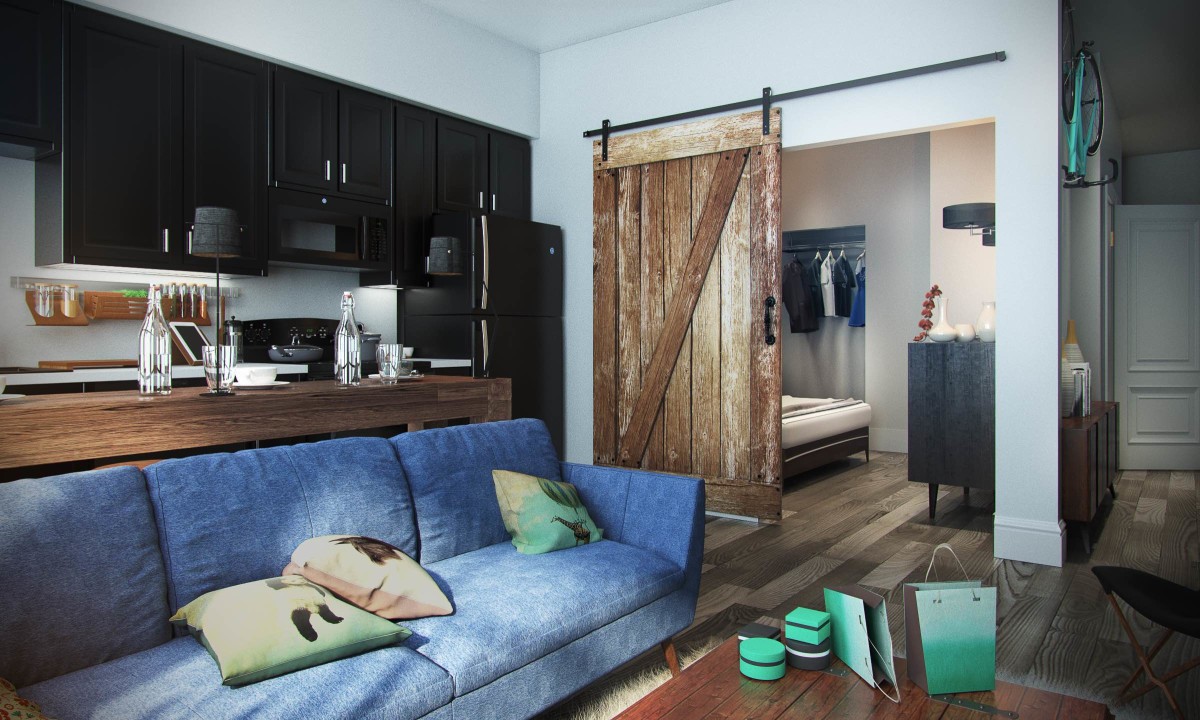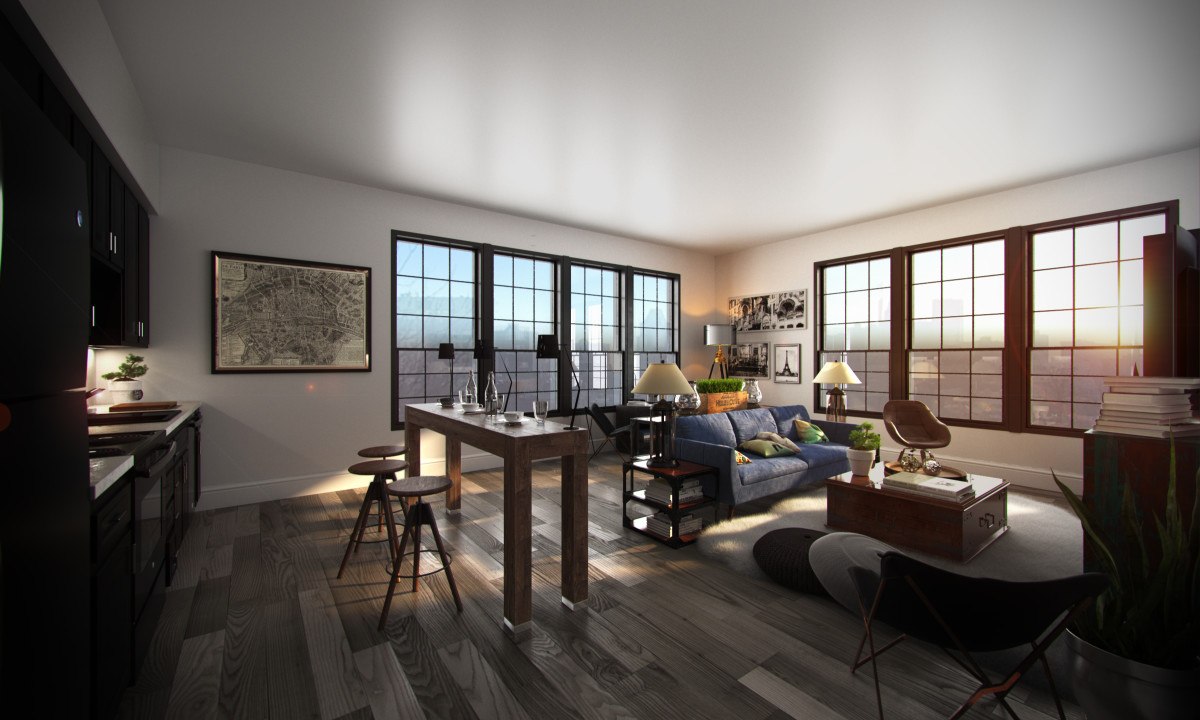Towering over a newly installed “R” statue in the middle of the block, Remington Row is still very much under construction. The future home of Johns Hopkins Community Physicians on the second floor is mostly an open floor with studs. There’s a deck that will provide a place for apartment dwellers to hang out in the summer, but it took some explanation.
Standing in one future apartment a floor up, Seawall Development’s Matt Pinto was in a hardhat surrounded by workers hammering away. He pointed out the plywood and plastic. And it was pretty obvious that the walls weren’t up yet.
“It takes a lot of imagination to feel what this is really going to look like,” Pinto said. “This apartment looks unfinished, to say the least.”
But Seawall Development wants you to see the finished product. In this case there is no encouragement to close your eyes or “go with me, here.”
Thankfully, there are goggles.
Starting this week, Seawall is offering virtual reality tours of the new apartments. With a Samsung Gear VR and renderings created by Ben Althoff and his team of five at Be The To Studios, the idea is to show prospective tenants what an apartment will look like before it’s completed.

“We can take people into these specific floor plans and give them a look through the apartment, so they can see what it looks like,” Pinto said.
Taking a look through the headset provided a chance to see where the kitchen and living room would be located, as well as the fact that the apartment would have hardwood floors. With the headset on, the view of Baltimore’s skyline to the south was still intact.
Peering around the corner into the bedroom, it was tempting to walk in. Touring a future loft apartment, looking down from the ledge was somewhere between floating and about to fall.

There were details like furniture, groceries on the counter and even a bike rack. The apartments won’t come with all of that, but Pinto said the idea is to give people a sense for the finished product.
The first wave of virtual reality in the ’90s brought video games to mind, and we’ve seen early examples of the recent wave being applied in education and research. With more portable and economical headsets like the Gear VR, Google Cardboard and Oculus Rift, firms like Be The To Studios are out to present a business case for virtual reality.
Remington Row has 108 apartments available. Some apartments are slated to be ready in June, and Pinto is hoping to fill apartments while the building is still being completed.
“We think that if we can get them in here to tour the space, and put on those [goggles], they’re going to say, this is a good place for me,” Pinto said of prospective tenants.
With the headsets, the Seawall team can also give a tour without a hardhat. This week, Seawall Director of Marketing and Leasing Shawn Brown took the Gear VR to a housing fair at Johns Hopkins’ Homewood campus. The images could also be downloaded by someone out-of-state.

VR is also creating new opportunities for Mt. Vernon-based Be The To. Althoff created the VR tour, which is basically 12 cubic images wrapped around a sphere, using Seawall’s floorplan. He could also add animation to make the experience even more realistic. The most time-consuming part is processing, he said, but he’s looking to scale up capabilities.
“It’s changing the way I do business forever,” he said.
Seawall Development is using VR to show off new apartments







